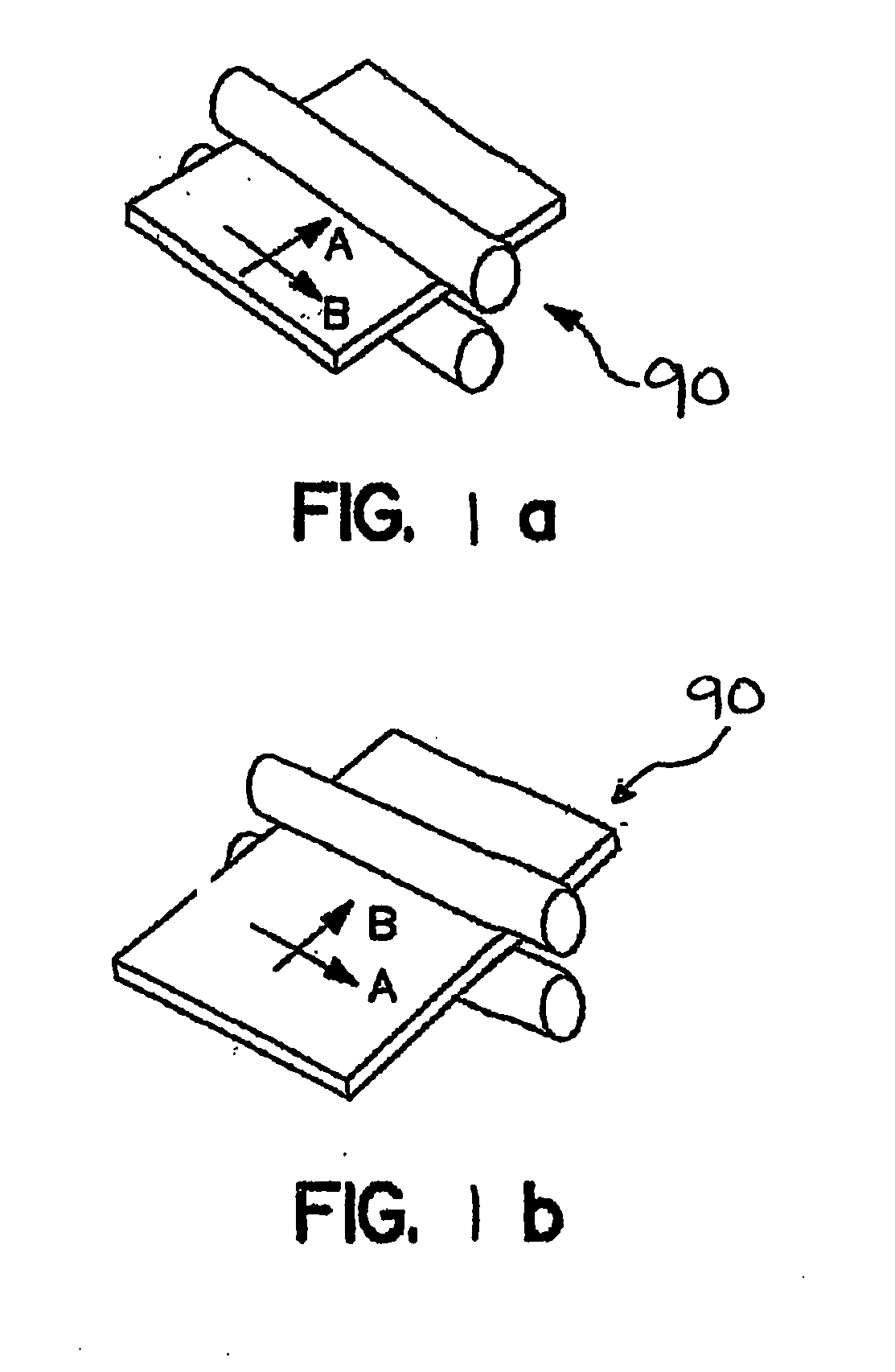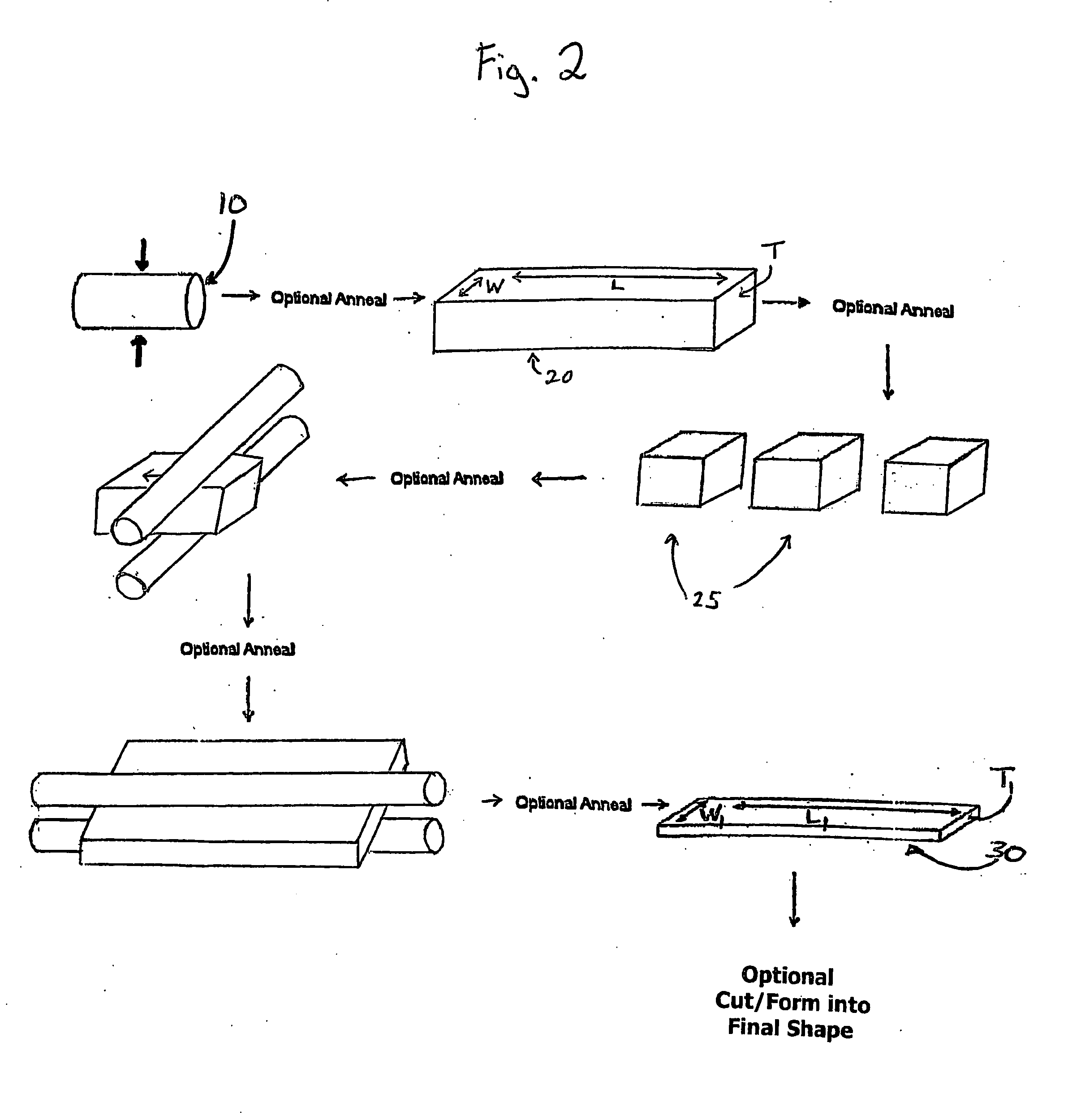Methods of producing deformed metal articles
a metal article and deformation technology, applied in the field of metal billets, can solve the problems of plate products having an excessive variation in gauge, inability to achieve tight dimensional tolerances through a standardized and repeatable deformation sequence, and divergence in plate thickness
- Summary
- Abstract
- Description
- Claims
- Application Information
AI Technical Summary
Benefits of technology
Problems solved by technology
Method used
Image
Examples
examples
[0076]Examples: Tantalum ingots were formed into slabs using press forging steps to obtain the starting dimensions Ws=5½, Ls=as in Table 1, and Ts=5.25″ nominal. The slabs were cut into multiple slabs (up to 6) so that the cut slab length was 27 inches. The cut slabs were then machine cleaned. The slabs were then annealed at 1050° C. for 3 hrs. in a vacuum furnace. Table 1 also provides the desired final product size once it is cut from the finished plate. The slab was then subjected to a first rolling (broad side rolling) in the direction of W in FIG. 3 or A in FIG. 1a. The roll schedule for the first rolling of the various slabs is set forth in Table 2. After the first rolling, the rolled slab was cut / divided by cutting the width in half. Also, the leading edge and trailing edge that went through the rolling were trimmed off. The cut-rolled slab was then annealed for some of the samples as indicated. The “Intermediate Plate” represents the plate after the first rolling passes and ...
PUM
| Property | Measurement | Unit |
|---|---|---|
| diameter | aaaaa | aaaaa |
| diameter | aaaaa | aaaaa |
| temperature | aaaaa | aaaaa |
Abstract
Description
Claims
Application Information
 Login to View More
Login to View More - R&D
- Intellectual Property
- Life Sciences
- Materials
- Tech Scout
- Unparalleled Data Quality
- Higher Quality Content
- 60% Fewer Hallucinations
Browse by: Latest US Patents, China's latest patents, Technical Efficacy Thesaurus, Application Domain, Technology Topic, Popular Technical Reports.
© 2025 PatSnap. All rights reserved.Legal|Privacy policy|Modern Slavery Act Transparency Statement|Sitemap|About US| Contact US: help@patsnap.com



